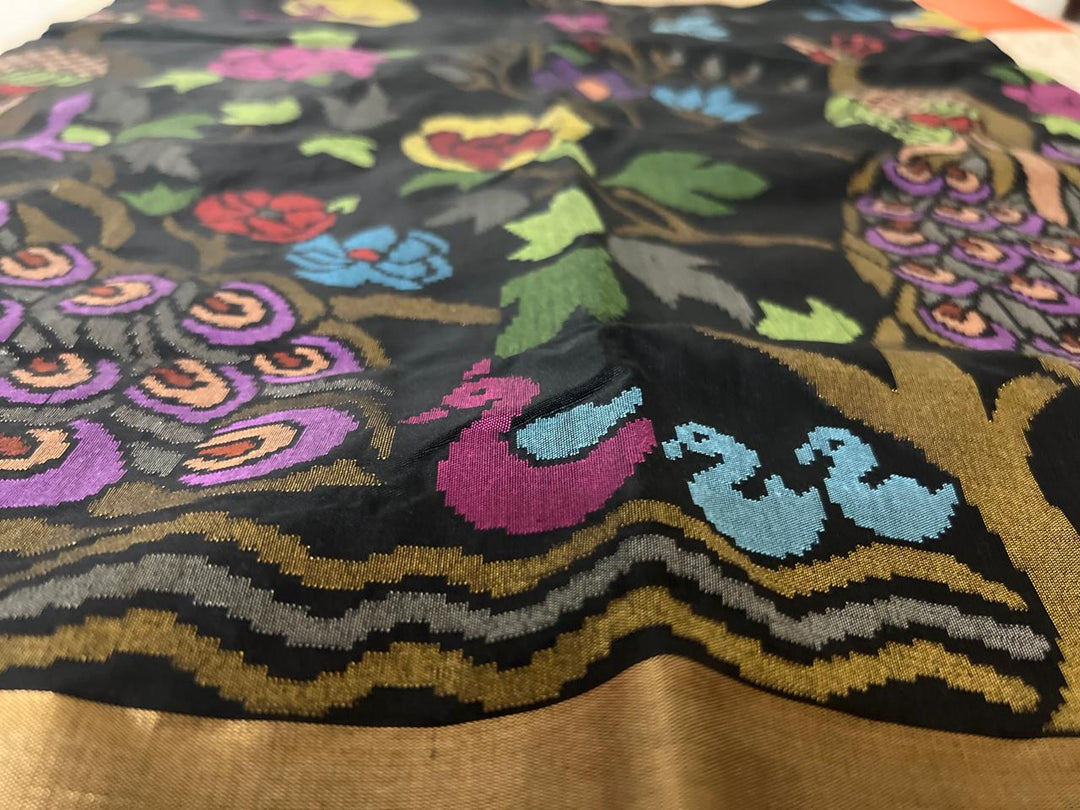Evolution of Sarees - The visual story

In today’s era ,we treat sarees as occasional wear or a garment to be worn mostly on special days.
But were sarees always part of a fashion statement, party wear or just occasional clothing?
How did the saree get its name?
The word sari evolved from a popular Sanskrit word "Sati" which means strip of cloth and "sattika" which means women's attire. "Sattika" was ideally a 3 piece ensemble which was worn by women, and today those 3 pieces of cloth took the shape of dupatta, choli, and skirt.

In the vintage era, women used to wear regional handloom sarees made of silks, cotton, etc. Most prominent silk sarees being Banarasi, Kanchipuram, Garhwal, Mysore, Uppada, Chanderi, etc which were traditionally worn for special days like festivals or marriages. Where as cotton sarees like Patola, Pochampalli, Sambalpuri, Jamdani, Tant, etc. were mostly worn as everyday clothing. Even the yarns were dyed using natural colors which were mostly extracted from plants like Indigo, turmeric and different flowers.

Indian saree is one that has been maintained, toiled, modified, and continues to emerge in different forms using different fabrics, different stylings, different drapes, different dyes but remains consistent in providing grace, power, and comfort to the wearer.

A garment like the saree which is considered quintessentially Indian has been influenced by and evolved by many different cultures. With the arrival of Mughals in India styling of sarees, fabrics and designs started changing and there was a marked difference between Hindu and Muslim women based on the way they got dressed every day.
Mughals established the saree as a standard Indian garment for women. They started using many traditional embroidery styles, embellishments which were then used by weavers and artists of India to give their sarees a new rich styling and look.
Saree during Mughals:

After the Mughals when Britishers took the command of India in their hand, sarees once again got evolved. It was during this time to suit to the Victorian aesthetics, the idea of a blouse and petticoat to be worn under the saree became the norm .The saree styling that we see today using blouses and petticoat and draped around the waist and over the shoulder leaving the midriff bare, was only developed during Britisher's era. By that time introduction of new techniques of weaving, dyeing, printing and stitching gave the traditional Indian saree a completely new look.
Saree during Britishers:

Saree during 1950 to 1990:


Saree during 2000 to 2010:


Saree trends now:


Nowadays on one hand, many world-known designers are coming up with different styles, exciting varieties, and new designs every day. And on the other hand old traditional saree styling, dyeing, painting techniques are being re-discovered and loved by everyone across the world. Also, interesting trends like wearing saree with sneakers or with jeans, styling them with blazers or bralette to jazz up their ethnic look using those old traditional sarees are giving a new avatar to our Sarees and it is truly loved by youngsters.
Credits: Google
The words shared here in the blog are a brief observation over time. We believe the complete evolution is a fascinating yet a long read for those who want to delve in detail.
Image courtesy: Google and Pinterest, we don't have any copyright.





